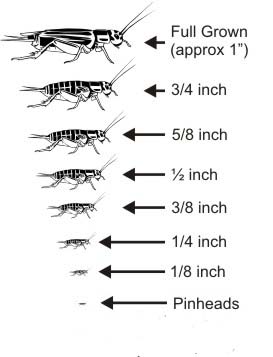zombiepixel
New Member
How long is a normal shed period? Trogdor has been shedding for days now. It's like the lower half of his torso isn't ready yet.
Follow along with the video below to see how to install our site as a web app on your home screen.
Note: This feature may not be available in some browsers.
mine is 6 or 7 m/o and i only have had him since july 6th and he shed 4 times

Hey my vieled Lucky shed 3/18, 4/17, 5/23, 6/22, 7/21, and 8/24. I got him when he was 2-4 month range from a forum member (dondeb)
Hopefully that clear the time frame, usually his she tok less than one day. Some times if they are not moist enough the shed could take 1-3 (in some cases)
Keep in mind different people have different ways of husbandry, some feed more some feed less. I am in the belief that chams can eat to their hearts content and it is not an extreme detriment as some people say. The whole feeding/overfeeding topic is subjective so just learn as you go and have fun with it and be safe!
Nutritional Requirements
Food Amount - It is not neccessary to feed juvenile panther chameleons at ad libitum rates. However, juveniles fed at levels not promoting rapid growth languish and die. Full-sized adults of either sex will maintain their body mass and reproduce if fed about 30 to 50 half-grown crickets per week (about 7 to 12 grams[0.25 to 0.42 oz]). For juveniles the number is variable and depends on the size of the prey relative to that of the chameleon. We recommend weighing the juvenile every 2-3 weeks. After each chameleon mass is determined, accumulate appropriate-sized inscects into a weighed container until the insect mass is equivalent to 0.3 times the mass of the lizard. Count the number and feed that number 3 times a week for the next 2-3 weeks. Then repeat the process.
-The Panther Chameleon
Gary W. Ferguson
James B. Murphy
Jean-Baptiste Ramanamanjato
Achille P. Raselimanana
well i have talked to forum members, THIS FORUM, and they have straight up told me "i give my big males 25 crickets a day, some times more sometimes less, it vary's from what they want daily" I have heard that from numerous SENIOR members, and i am tlaking about folks who have been in the herp hobby for 10 years minimum. I have read probably about 10 books and oddly enough i have not found anything that says feeding them more than 10 crickets daily, what most people say you shouldn't do is bad for them. I feed my chams around 10-20 crickets every other day with random worms given whenever. I have had clutches from females and my males have decent fat deposits, but not overly fat. I have yet to see any negative outcome.
I dont get why people are so particular with chams and feeding, yet they will throw a half eatin t bone to their dog after its eating is kibble for the night. Chameleons can control their fat content, they do not eat themselves to death like a dog would.
Is that enough backup for me to say that i think every one should handle their chameleon as they see fit?
Regardless if you agree this was the whole point of me bringing it up, you dont have to. Because people treat their animals than other people do. I just dont get why people feel the need to tell some one exactly how to take care of their animals/pets/
Thank you for that, ill check that book out very soon, does it talk about any possible negative outcomes if fed too much? it did briefly say if not fed enough itll die, but thats obvious.
I am not going to "throw people under the bus" to prove my point. Funny enough i know for sure i can name 3 names that 90% of the forum knows.
I guess i am a glutton for punishment, most people just keep to themselves about husbandry (like the members i dont speak of) because they dont want to be hassled.
I just feel that people shouldnt tell others exactly how to care for their animal. I dont think i ever said once "You should over feed them" but i also have never said "You should not feed them as much as you do"
Again i believe to each his own and if a person feels that it is not harmful to the animal to feed them 25 crickets daily, AND they see no negative side effects i dont see a problem.
Actually, I'm not sure if it's this book or one of the others we have that states that often a chameleon will eat as much as what is offered and once the body has used what it needs, the excrement will then contain undigested parts. Sort of like the cham eats for the joy of eating and the body just carries out the unused bits.
On the other hand a lot of the people on the forum seem to have posted a lot of concerns about their girls over-feeding and producing overly large clutches...
I do agree with your joy of husbandry. Sometimes it can feel as though there is judgement behind the helpful hints on forums.
How much later on? I mean these members i talk to have had probably hundreds of chams stay in their care the whole chams life, and they saw nothing out of the ordinary.
Edit: ill follow up on this 2morrow, im dead tired and gatta wake up in 5 hours!Good convo though ttyl about it
How long is a normal shed period? Trogdor has been shedding for days now. It's like the lower half of his torso isn't ready yet.